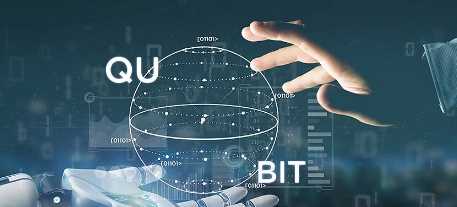In recent years, there has been a growing interest in exploring the intersection of machine learning and quantum computing. Both of these fields are rapidly advancing and have the potential to revolutionize numerous industries. However, understanding how they can be combined and what benefits they offer can be challenging.
Quantum computing is a new and powerful technology that uses the principles of quantum mechanics to perform calculations that would be impossible with classical computers. The core idea behind quantum computing is the use of quantum bits or qubits, which can exist in multiple states simultaneously. This enables quantum computers to perform complex calculations in a fraction of the time that it would take a classical computer.
On the other hand, machine learning is a subfield of artificial intelligence that involves the use of algorithms and statistical models to enable machines to learn from data and make predictions or decisions without explicit instructions. Machine learning has already had a significant impact on many industries, from finance to healthcare.
When these two fields are combined, the potential benefits are enormous. Here are some of the key ways in which machine learning and quantum computing can work together:
Improved optimization: One of the biggest challenges in machine learning is optimization, which involves finding the best parameters for a model given a set of training data. This is a complex problem that can take a long time to solve, especially for large datasets. Quantum computing can help to speed up this process by using quantum annealing, which is a technique that allows for more efficient optimization.
Faster data analysis: Another area where quantum computing can help machine learning is in the analysis of large datasets. Quantum computers can process data much faster than classical computers, which means that they can be used to analyze large amounts of data in real-time. This can help to speed up the training of machine learning models and enable more accurate predictions.
Enhanced feature selection: Feature selection is an important part of machine learning that involves identifying the most relevant features in a dataset. This can be a time-consuming process, but quantum computing can help to speed it up. By using quantum algorithms, it is possible to identify the most important features in a dataset much faster than with classical methods.
Improved cybersecurity: Quantum computing has the potential to revolutionize cybersecurity by enabling the development of new encryption algorithms that are much more secure than current methods. This is because quantum computers can quickly factor large numbers, which is the basis for many encryption algorithms. By using quantum encryption methods, it may be possible to develop systems that are virtually impossible to hack.
Better prediction accuracy: Finally, machine learning models can benefit from the increased accuracy of quantum computing. Quantum computers are able to perform calculations that are impossible with classical computers, which means that they can be used to develop more accurate models. This can help to improve the accuracy of predictions and enable better decision-making in many industries.
Despite the potential benefits of combining machine learning and quantum computing, there are also significant challenges that need to be addressed. For example, quantum computing is still a relatively new technology, and there is a shortage of experts who are able to develop algorithms and applications for it. In addition, quantum computers are still expensive and difficult to operate, which means that they are not yet widely available.
Despite these challenges, there has been a significant amount of research into the intersection of machine learning and quantum computing. Many companies and research institutions are investing in this area, and there have already been some promising results.
One example of a successful application of machine learning and quantum computing is in the development of quantum machine learning algorithms. These algorithms are specifically designed to run on quantum computers and take advantage of their unique capabilities. By combining machine learning with quantum computing, it may be possible to develop more powerful and accurate models that can be used in a wide range of industries.
Another promising area of research is in the development of quantum neural networks. Neural networks are a fundamental part of machine learning, and they are used to build models that can learn from data and make predictions. By combining neural networks with quantum computing, it may be possible to develop more powerful models that are capable of learning even more complex patterns in data.
There are also efforts underway to develop quantum machine learning frameworks that can be used by researchers and developers. These frameworks provide a set of tools and libraries that can be used to build machine learning models specifically designed for quantum computers. This will make it easier for developers to explore the intersection of machine learning and quantum computing and to develop new applications in this area.
Conclusion
The intersection of machine learning and quantum computing is a rapidly advancing field with enormous potential. By combining these two technologies, it is possible to develop more powerful and accurate models that can be used in a wide range of industries. However, there are still significant challenges that need to be addressed, such as the shortage of experts in this area and the high cost of quantum computers. Despite these challenges, there is significant research and investment in this area, and we can expect to see many exciting developments in the coming years.




Leave Comment